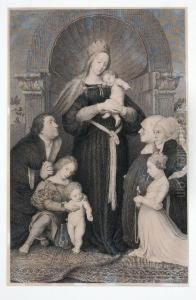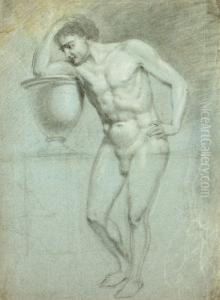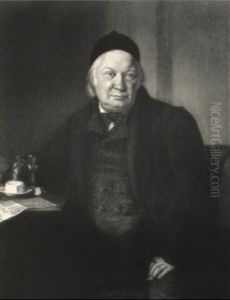Moritz Steinla Paintings
Moritz Steinla was a German engraver and artist, born in 1791 in Dresden, Germany. His full name was Moritz Daniel Oppenheim Steinla. He is known to have been active during the early to mid-19th century, a period that saw significant changes in the arts across Europe, with movements such as Romanticism and Neoclassicism influencing the artistic creations of the time.
Steinla's work was primarily in the field of engraving, which involves incising a design onto a hard, flat surface by cutting grooves into it. This form of art has a long history and was especially important before the advent of photography for reproducing other works of art, such as paintings, in a form that could be widely distributed. Engravers like Steinla were highly skilled craftsmen who could translate the tonalities and details of a painting or drawing into a print that could be mechanically reproduced.
Not much is broadly documented about Steinla's personal life or training, which is common for many craftsmen of the era. However, his artistic output suggests that he had a high level of technical ability and was able to work with a variety of subjects, from portraiture to scenes of historical or mythological significance. Steinla's engravings would have been used to create prints for books, periodicals, and standalone pieces of artwork.
During his career, Steinla would have been part of an artistic community that was gradually shifting towards more modern forms of expression. However, as an engraver, his work would have largely been in service of replicating and disseminating the works of contemporary and past artists, rather than pushing the boundaries of artistic style himself.
Moritz Steinla died in 1858, leaving behind a legacy as a skilled engraver of his time. While he may not be as widely recognized as some of the more famous artists of the 19th century, his contributions to the art of engraving helped to preserve and propagate the visual culture of his era. His works remain a testament to the craftsmanship and attention to detail that were the hallmarks of fine art engraving before the rise of photographic reproduction.


